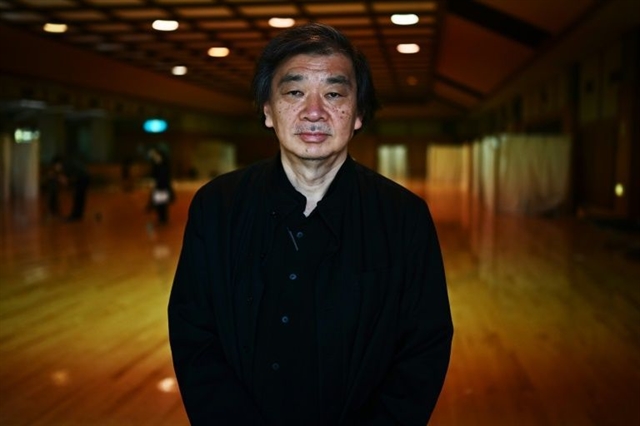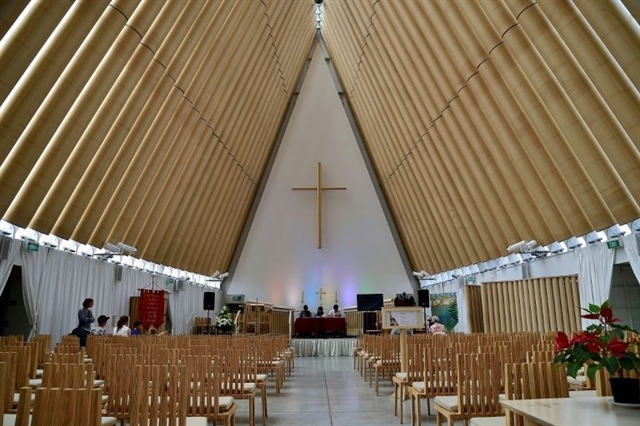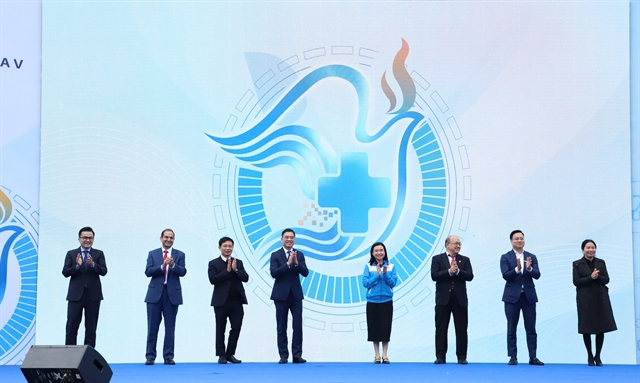 Life & Style
Life & Style


|
| Shigeru Ban said cities need to start planning now to mitigate the nightmare scenario of an earthquake or typhoon striking before the pandemic has run its course. — AFP/VNA Photo |
TOKYO — Japan's Pritzker Award-winning architect Shigeru Ban, famous for designing buildings from paper tubes in disaster areas, says the world needs to think about tackling natural catastrophes in the coronavirus era.
And while he hopes the pandemic will lead to less of a crush on Tokyo's packed commuter trains, he warns against relying on teleworking, stressing that hands-on contact with materials is vital for great architecture.
Speaking from his Tokyo office, the 62-year-old said cities need to start planning now to mitigate the nightmare scenario of an earthquake or typhoon striking before the pandemic has run its course.
Ban has won plaudits for his involvement in disaster relief projects around the world and urged city authorities to invest in a stock of shelters that can be deployed quickly with infection prevention in mind.
"Shelters will create clusters of people. It will be too late if it takes a few days (to build them)," he stressed.
His team has designed shelters partitioned off by a frame of sturdy paper tubes with cloth hanging two metres (6.5 feet) from the top of the cubicle to the floor.
Social distancing would become practically impossible in the event of a major earthquake and officials need to make plans to ease the density in shelters, argued the Japanese architect.
The central government and local authorities have been so tied up dealing with the pandemic that it's "only recently that people started talking about what to do in the wake of earthquakes."
"I know it's not easy but I think we have to think about it," he said.

|
| Ban designed the Cardboard Cathedreal for Christchurch in New Zealand after the 2011 earthquake. |
3D pictures
In March, Ban was on his way to the airport for a flight to Paris but made a sharp U-turn when he heard the French capital was about to be locked down at the height of the coronavirus pandemic.
Since then, he has thrown himself into his work, walking five minutes to his Tokyo office seven days a week.
"It's been probably the first time in some 16 years that I've stayed in Japan for more than a month. I've been very much moved by the beauty of spring in Japan," he said.
"I don't do anything but work. I have no hobbies and I'm not doing anything special because we are in this situation," he said.
Ban has travelled all over the world for his architecture -- including building the Cardboard Cathedral for Christchurch in New Zealand after the 2011 earthquake -- but he fears the coronavirus could encourage Japanese students to stay put.
"What worries me most is that students may become intimidated. Even before the coronavirus woes, fewer and fewer students wanted to study abroad as Japan is safe and peaceful," he said.
Despite an ageing population and some of the most densely packed cities on Earth, Japan has been relatively spared by the pandemic, with fewer than 900 dead and around 17,000 cases.
And while the virus offers a "great chance" to reduce the crowding on crammed public transport, Ban said: "This doesn't mean we don't have to go out."
"It's dangerous to try to solve everything with technology. It's wrong to believe we don't have to meet up in person because we can video-conference," he said.
He added that close contact with materials was still the key to great architecture, which technology could not replace.
"Drawing parts or 3D pictures with computers is totally different from building models or creating things by actually touching and feeling the weight of materials," he said.
"This is true no matter how much technology develops." — AFP




